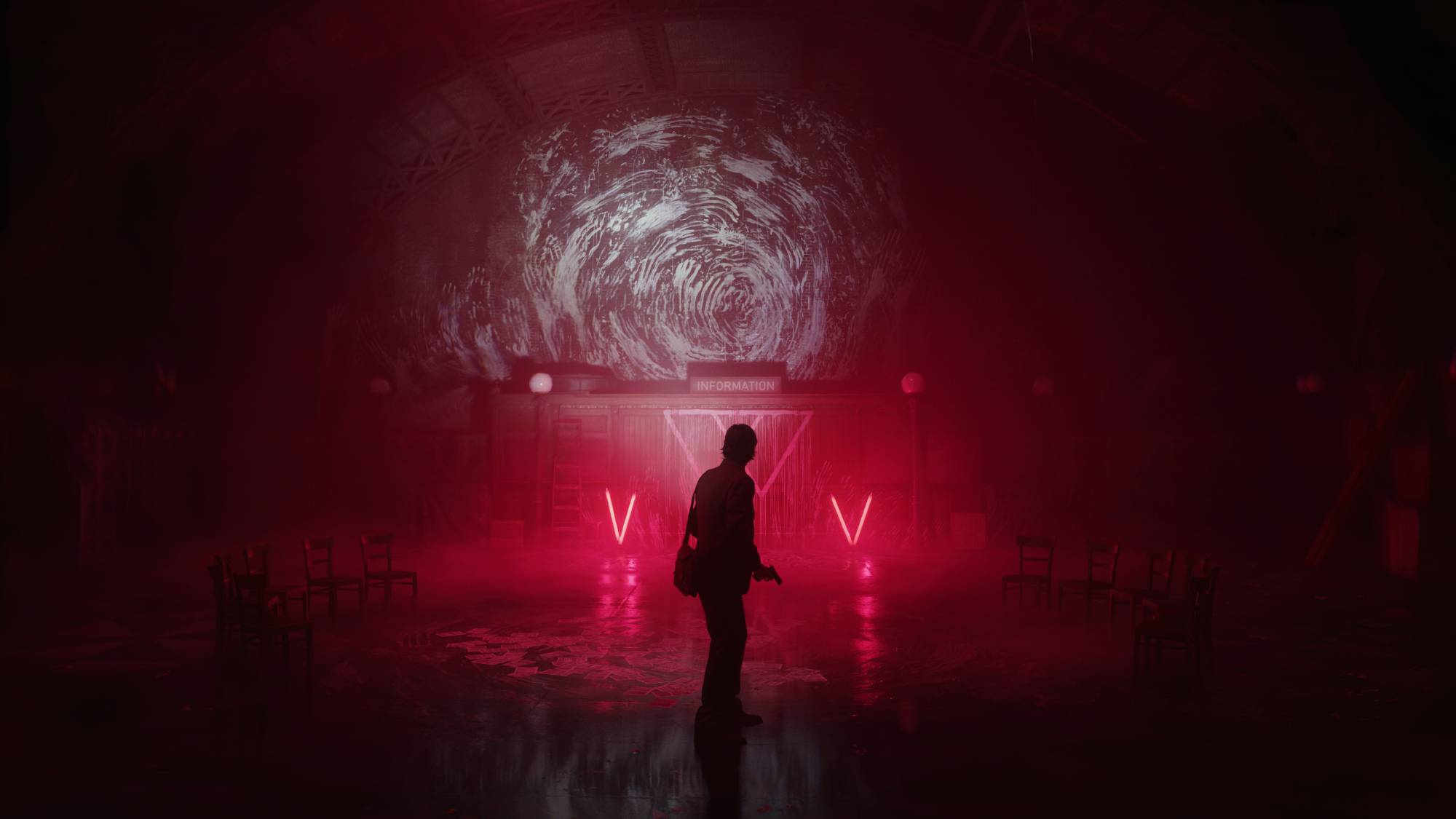
Platforms: PC, PS5 (reviewed), Xbox Series X
Price: $59
Release Date: October 27, 2023
Genre: Survival horror
It’s sort of miraculous that Alan Wake 2 exists. Released in 2010, the first Alan Wake was far from a commercial smash, but it developed a much-deserved cult following over the years. Developer Remedy subsequently moved on to other projects, and for a while, it seemed the chances of the original’s cliffhanger ending being resolved were remote.
Fast forward 13 years, and it’s surreal to say that Alan Wake 2 now actually exists. And it gives me great pleasure to confirm that this long-awaited sequel is just as esoteric, surreal and downright bizarre as its predecessor. But, that’s not to say Alan Wake 2 doesn’t carve out its own unique identity. Remedy has smartly tightened up the gameplay and switched Wake from an action-shooter to a full-blown survival horror experience.
Alan Wake 2 takes some big swings, and while some of them miss the mark, it’s hard not to admire the immense ambition on display. In a gaming industry that is too often dominated by formulaic sequels developed with the mass market in mind, Remedy has crafted the video game equivalent of an auteur filmmaker being given a blank cheque. And that’s the game's biggest strength, but also its most frustrating flaw. Read on for our full Alan Wake 2 review…
A real page-turner
Set 13 years after the original, Alan Wake 2 spins a wonderfully meta plot that is told via two intertwining characters. The eponymous writer who is trapped in a distorted nightmare world known as The Dark Place, and newcomer Saga Anderson, an FBI agent arriving in the mountain town of Bright Falls to investigate a string of grisly murders.
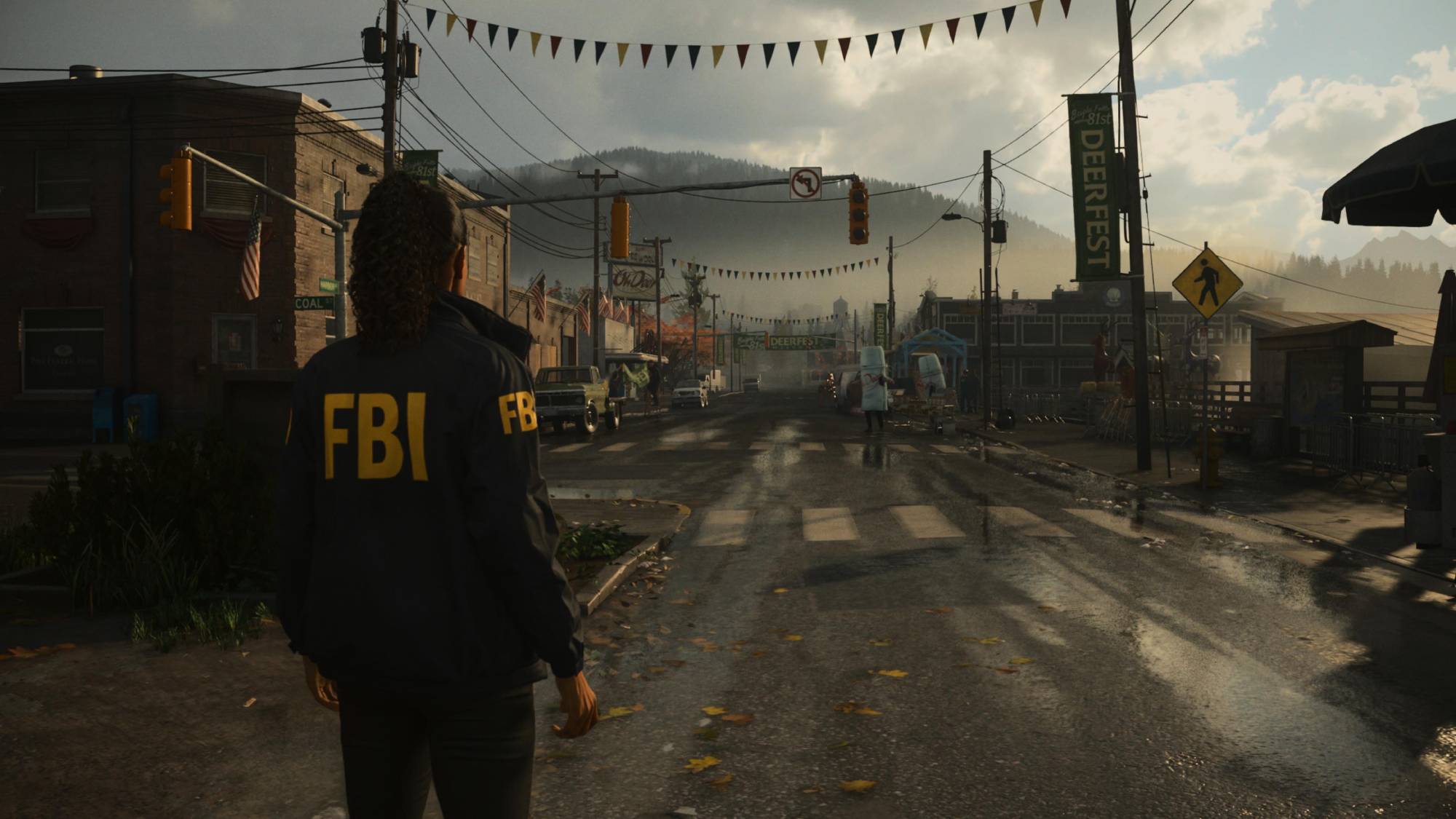
Alan Wake 2 wears its influences on its sleeve. Its story is a potent mix combining the best bits of HBO’s True Detective (particularly the acclaimed first season) and David Lynch’s Twin Peaks, with a good splash of Stephen King thrown for good measure. It makes for a distinctive narrative, and while I expect some players will find its frequent bizarre detours alienating, if you’re willing to immerse yourself in the odd experience, you just might find yourself hooked.
Unexplained abnormalities are a frequent occurrence. An early chapter has you wander into a rural bar to find a janitor (a returning character from 2019’s Control) singing karaoke, while one recurring segment has Alan Wake appear on a late-night talk show to promote his new book — there’s just the slight problem that he has no memory of writing the novel in question. If you demand a rational explanation for each scene, prepare for disappointment.
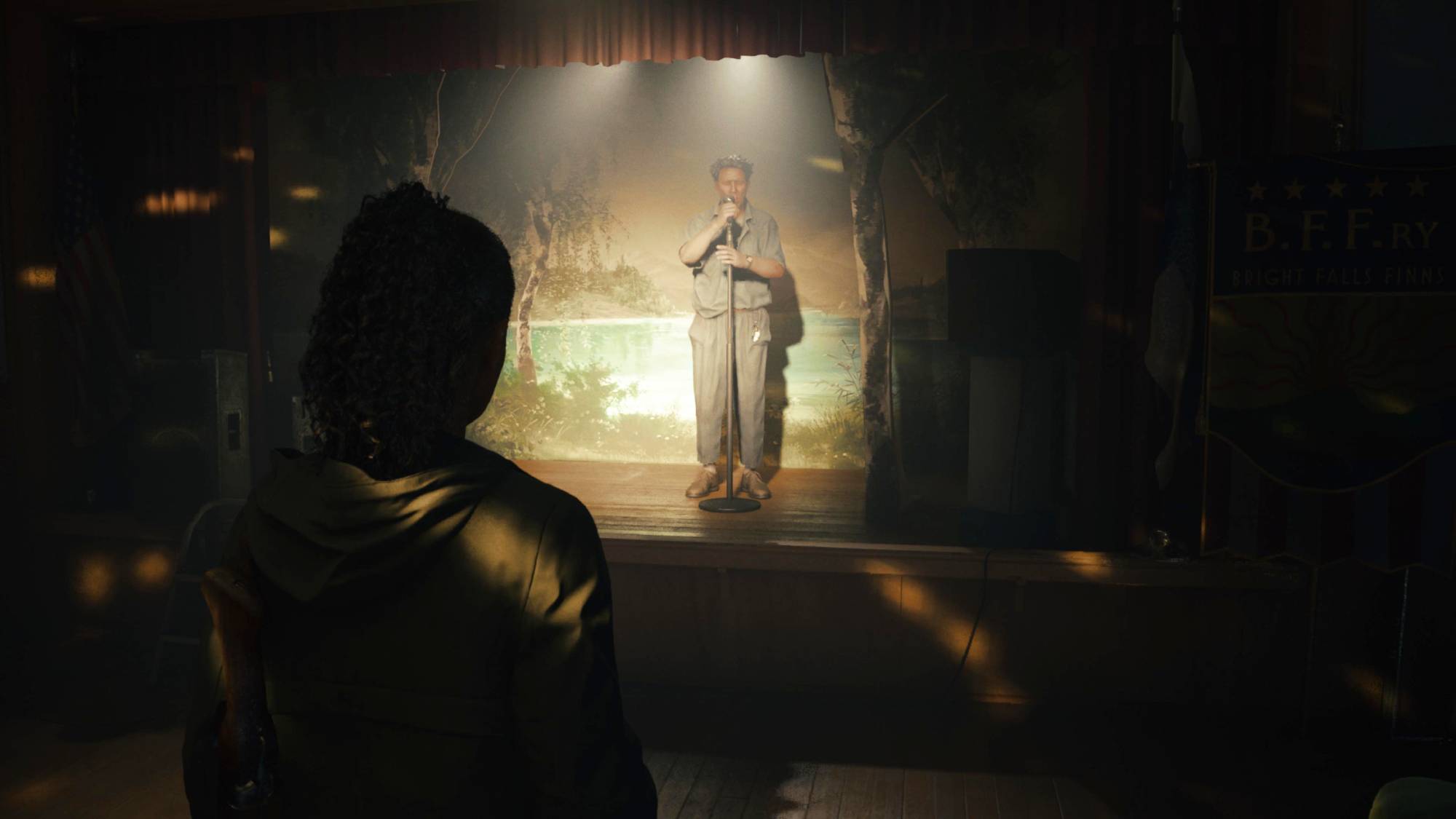
Remedy also splices in live-action footage throughout Alan’s portion of the game, and these scenes are pleasantly effective at increasing the game’s cinematic quality. Don’t worry, there’s nothing as immersion-breaking as Quantum Break’s 30-minute TV show episodes. The live-action clips are interspersed with gameplay and feel natural rather than distracting.
Just for the record, while you don’t need to have played Alan Wake Remastered before diving into Alan Wake 2, I’d strongly recommend doing so. The original has held up pretty well, and the most captivating moments of this sequel will only fully connect if you’ve got priors with Alan Wake’s plight, and the spooky events he experienced in Bright Falls.
Light 'em up
The core combat mechanic of Alan Wake 2 hasn’t changed from its predecessor. Downing the hordes of corrupted foes you face involves first weakening them with the intense beam of a flashlight before firing off several rounds from a variety of firearms. It was a novel idea in 2010, and even now it remains highly satisfying to zap enemies with your supercharged torch, and then pump them full of lead until they explode into a shower of sparks.
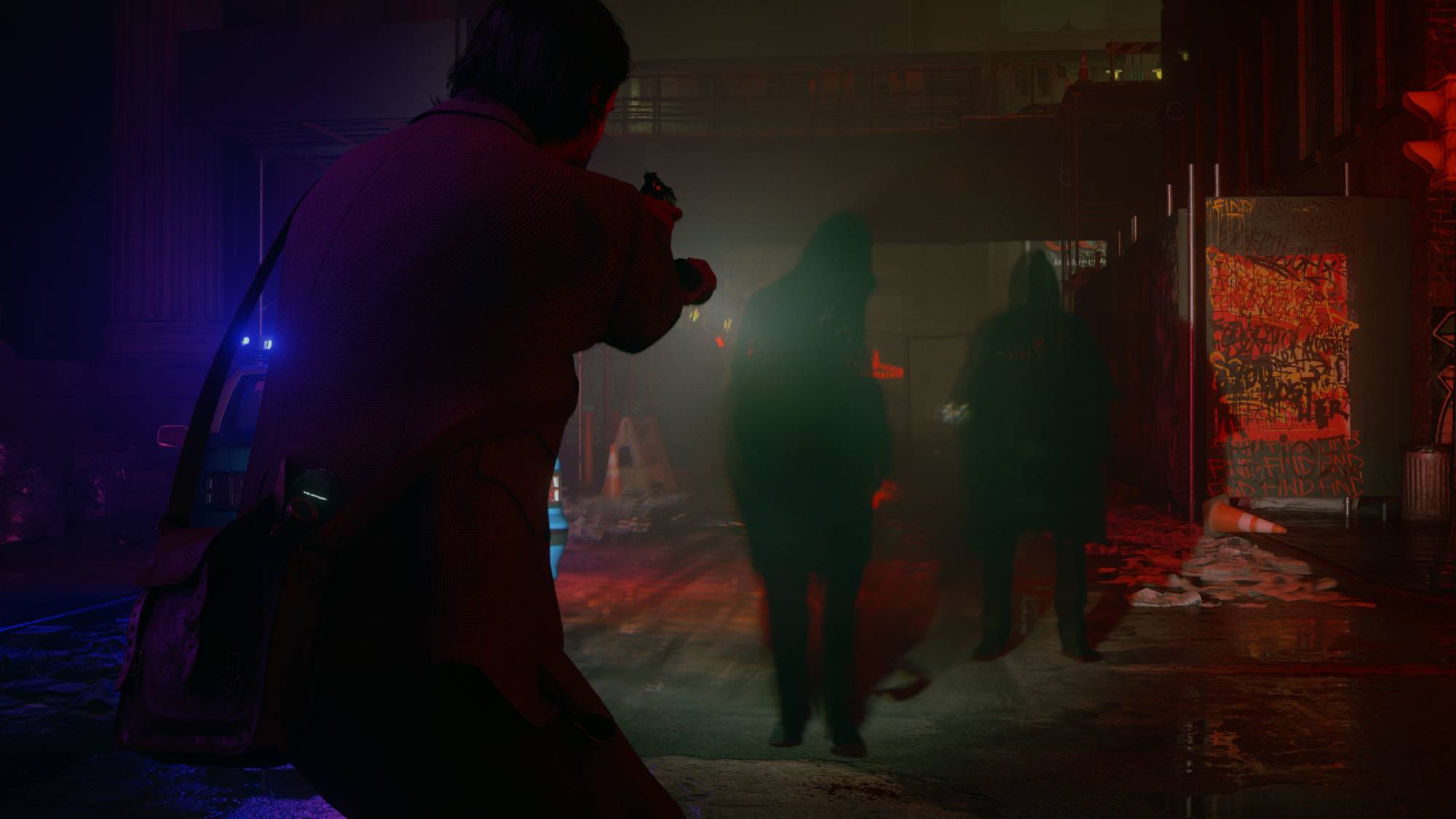
However, Alan Wake 2 moves away from the action-shooter emphasis of its predecessor in favor of a survival horror approach that feels inspired by the recent Resident Evil remakes. Inventory management and careful use of your resources are key to survival. It results in significantly intense combat encounters. Miss even a couple of shots and you’ll be faced with the game’s highly disturbing game over screen.
Unfortunately, there’s a real lack of enemy variety. Whether playing as Saga in Bright Falls or Alan in The Dark Place, most enemies simply rush at you and strike with a club, axe or fists. A few enemies switch things up by throwing explosive projectiles but familiarity creeps in quickly, which diminishes the dread that early combat encounters elicit. There are only so many times a cultist in a creepy deer mask can bumrush you before the frightening effect begins to wane.
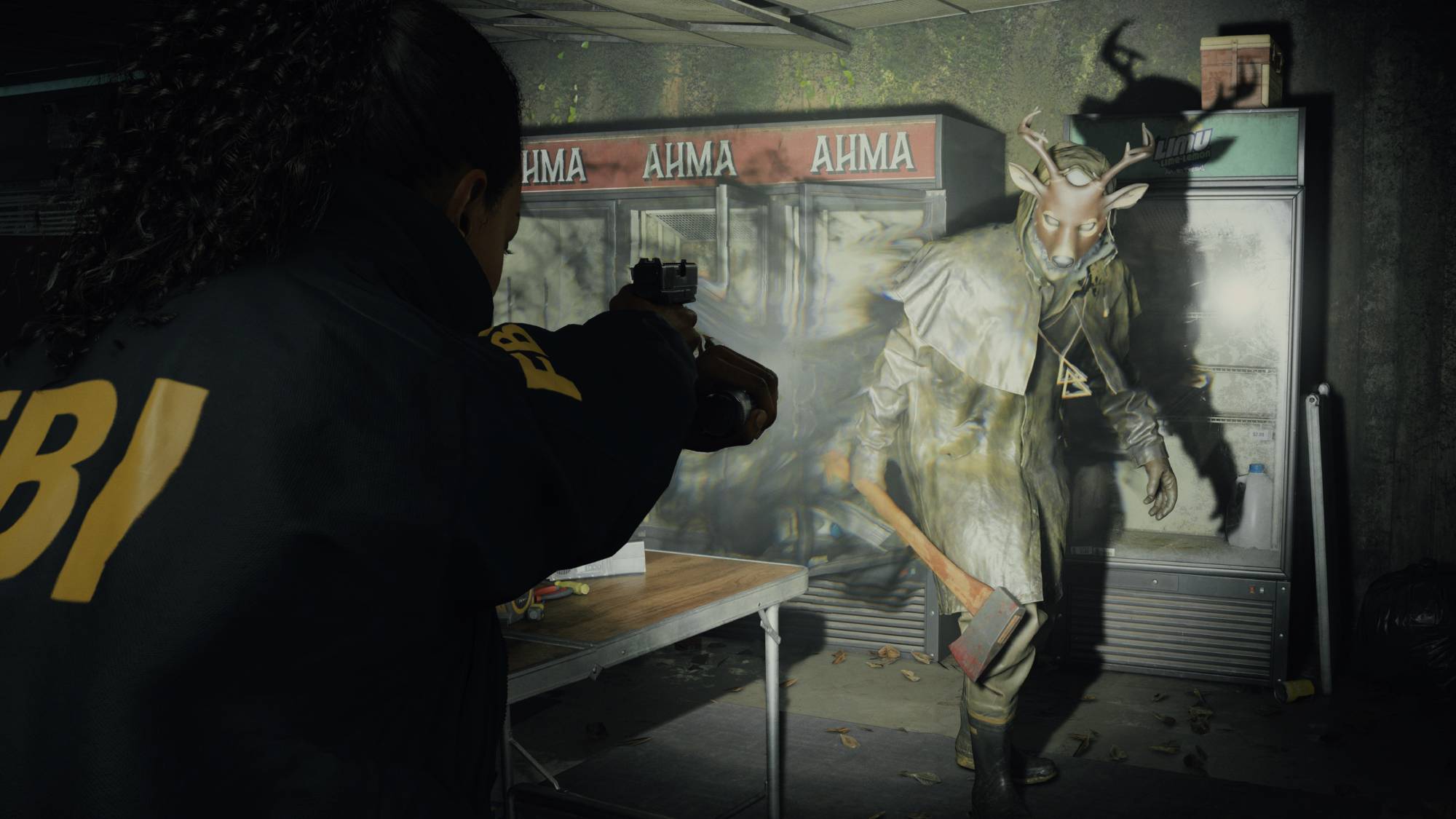
However, you won’t have time to get too bored of facing off against the same few enemy types, as there’s less combat than you might expect. The first Alan Wake was criticized for tediously long stretches of repetitive combat, and Remedy oversteers in its efforts to correct. This problem is most apparent in the early stages. During the first four hours of my 16-hour playthrough, I only fought around half a dozen enemies and was craving a tad more action.
Piecing things together
You’ll spend a great deal of your time in Alan Wake 2 investigating the central paranormal case as Saga, and solving abstract puzzles as Alan. The former sections are gripping, while the latter are sporadically riveting but also feature the game’s most frustrating moments.
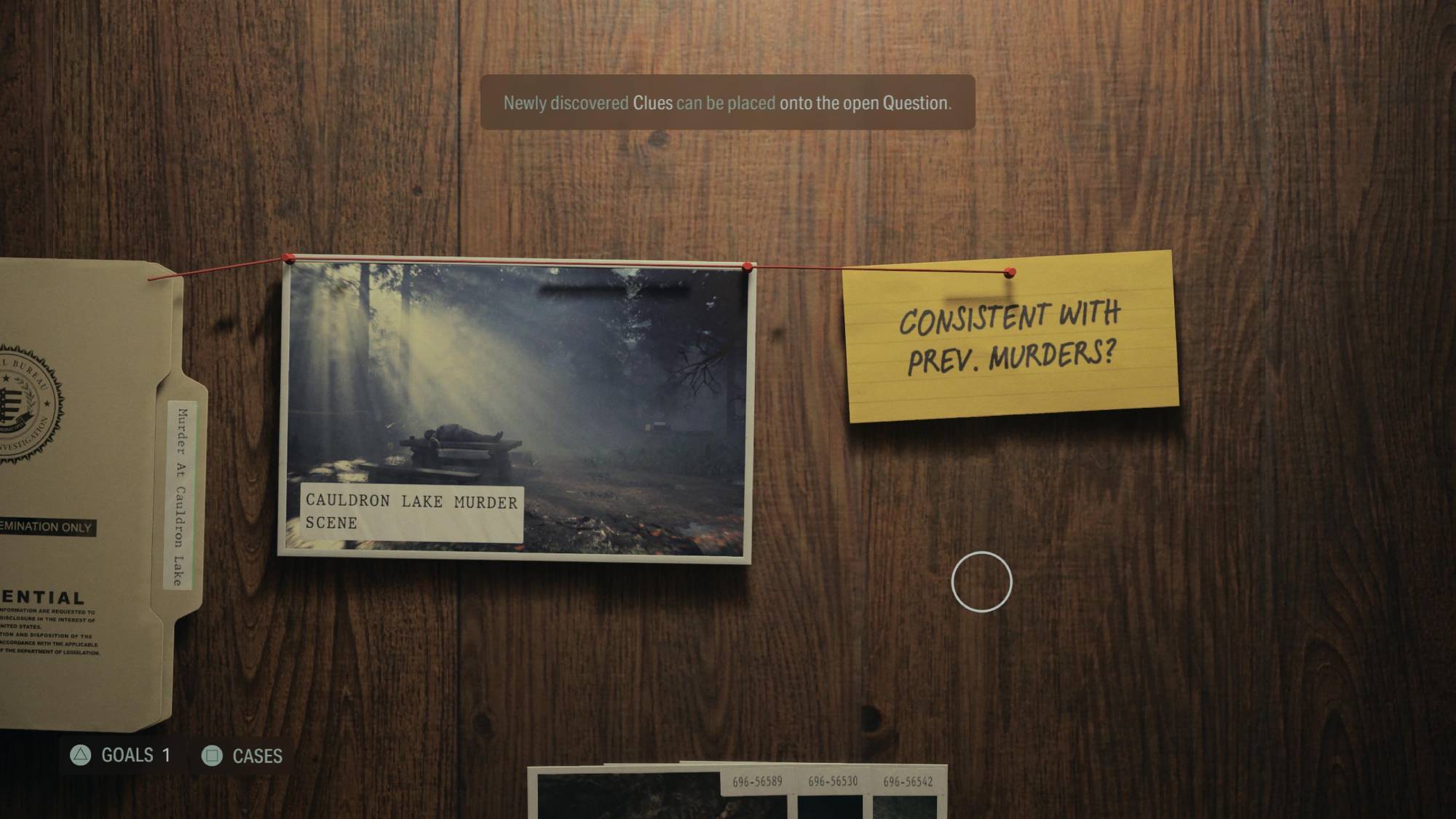
During Saga’s portion of the game, you’ll come across a large number of environmental clues that can be sorted through in your “Mind Place”. This interactive area can be accessed at any time with a single button press and lets you map out all the info and character profiles you’ve collected. It’s a great way of keeping tabs on what you’ve investigated during the game’s many mysteries, and makes following the high-concept story remarkably straightforward.
Saga’s campaign as a whole contains the lion's share of Alan Wake 2’s best moments. Not only is Saga a fantastically well-realized character in her own right, but several of her chapters mesh combat and rewarding exploration expertly. You can tackle Alan and Saga levels in any order, and while I advise alternating between the two for thematic reasons, I very much looked forward to returning to Saga whenever I switched over to Alan.
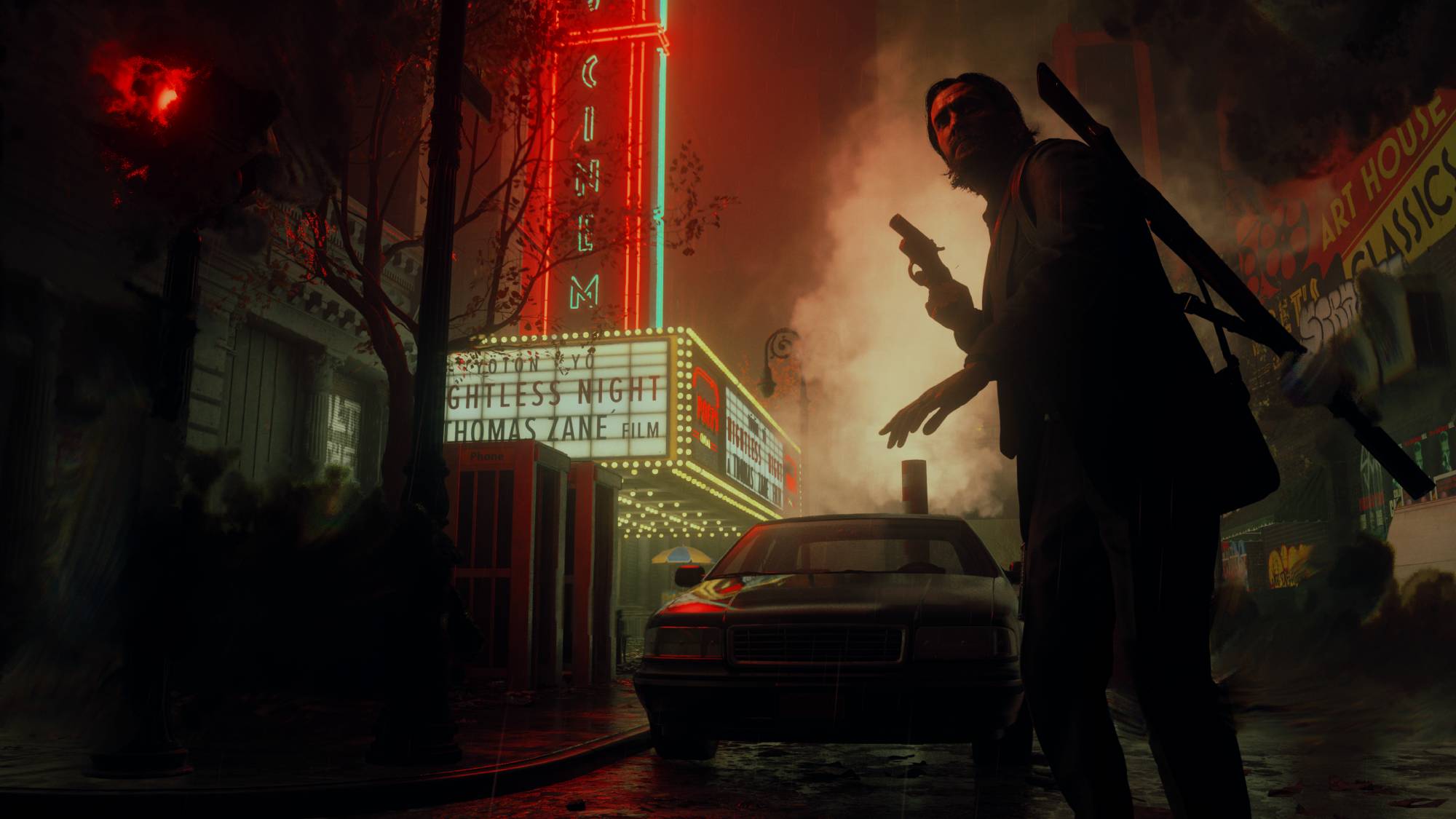
Alan’s chapters within the evershifting Dark Place are significantly less engaging and some of them are downright infuriating. For starters, combat encounters are ruined by the decision to place dummy enemies every few steps. These harmless shadows merely whisper sinister taunts but they make it very hard to tell if you’ve eliminated all the immediate threats in an area. The overuse of a distortion effect in The Dark Place further compounds this issue.
Outside of combat, Alan’s chapters boil down to repetitive puzzles that amount to little more than trial-and-error experimentation. These sections see Alan rewriting the world around him by combining a location with a narrative trigger. On paper, it’s a clever way of mixing Alan’s profession as a writer into the gameplay, but in practice, these puzzles are hugely mundane.
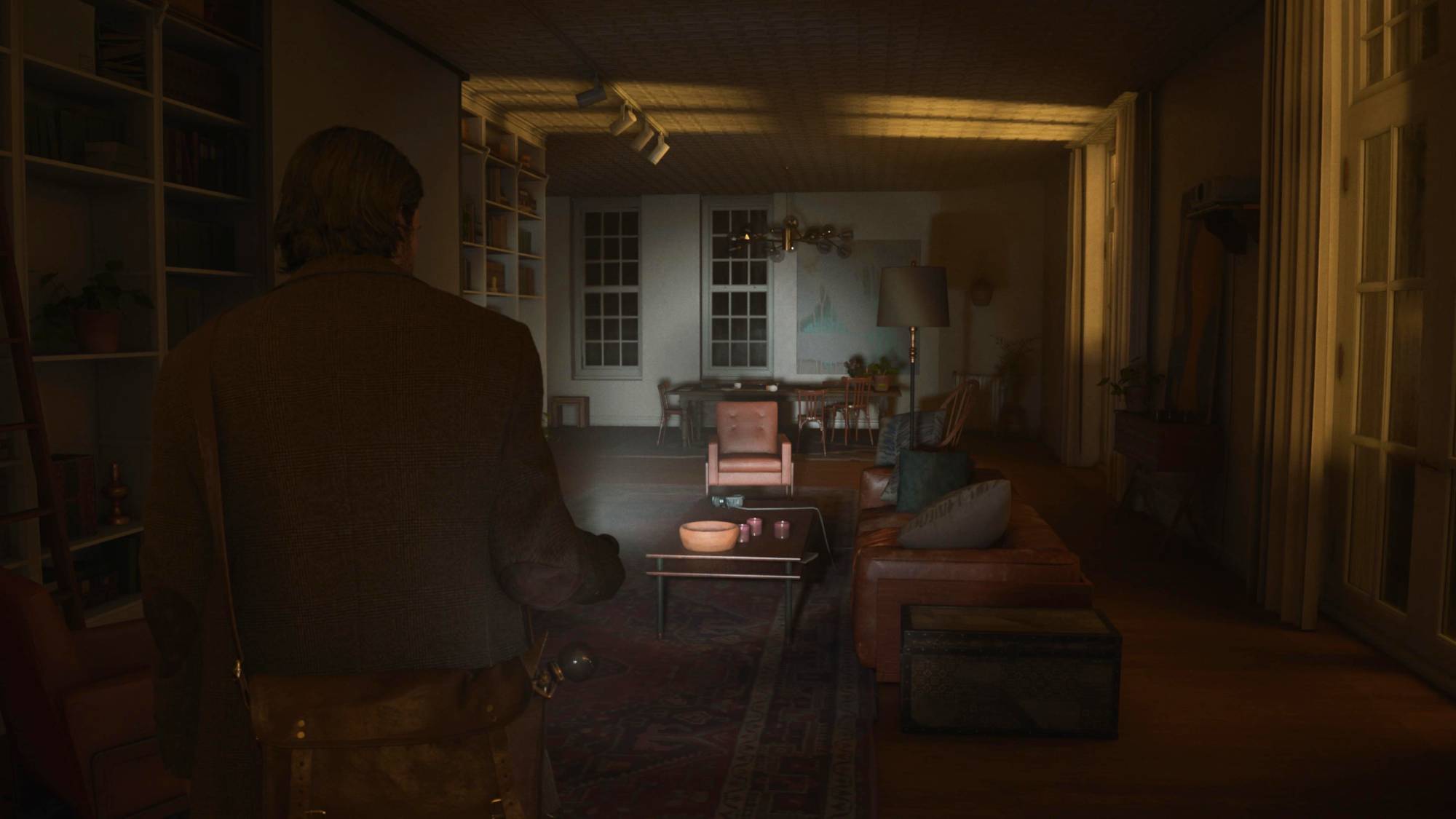
Being constantly forced to suffer through another puzzle section as Alan greatly harms the overall pacing. More broadly, stuttering momentum is a frequent problem overall. Even as Saga, you’ll endure long stretches without any combat and with a little too much information to sort through in the Mind Place. The slow opening act is particularly guilty in this regard.
Hey, good lookin’
Even when Alan Wake 2 had me feeling frustrated, it’s still never anything less than a visual marvel. Playing on PS5, it feels like a true showcase of the power of Sony’s current flagship console, and if you’re the sort of gamer who enjoys taking screenshots, expect your playtime to be practically doubled as you’ll want to pause every few seconds to grab a stunning snap.
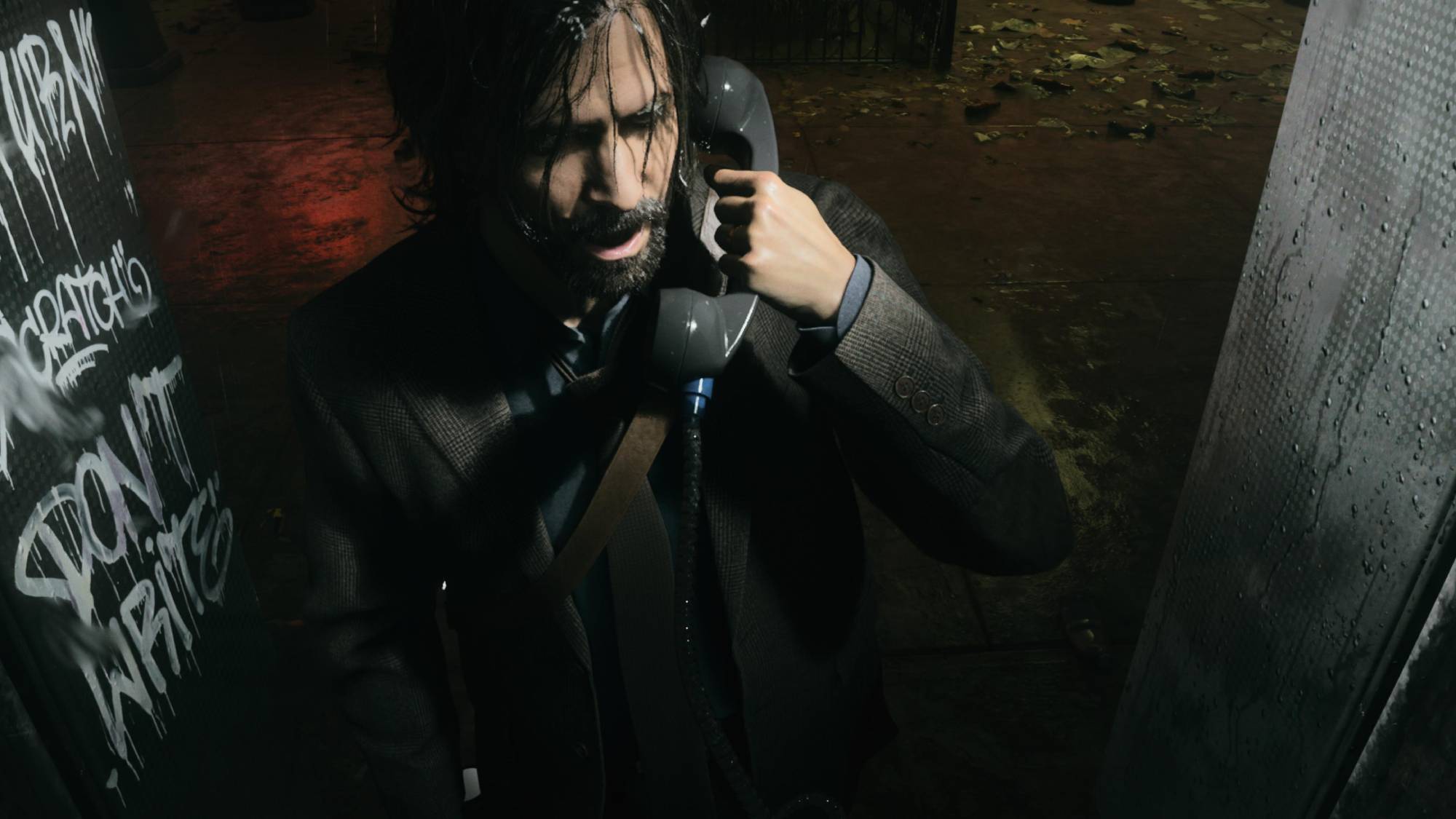
It’s not just the graphics that are downright jaw-dropping, either. The visual design is truly stellar. Each location you visit as Saga is extremely intricate, with the small town’s center map being a personal highlight. I spent several minutes aimlessly wandering the highly-detailed streets window shopping, before remembering I was there to solve a murder. The Dark Place’s design is also highly imposing. That is when you’re permitted to enjoy its unsettling sights without all the unnecessary distortion effects and playtime-padding puzzles.
Unsurprisingly, audio quality matches the fantastic visuals. The voice acting is remarkably strong with Melani Liburd as Saga and Ilkka Villi as Alan carrying the weight of the game’s expansive story with ease. Special shout out to game director Sam Lake, who inserts himself into the proceedings as Saga’s partner and David Harewood as the charismatic but also very perturbing talk show host Warlin Door. Plus, the sound design is impeccable. Audio effects are used to ratchet up the tension in all the right ways.
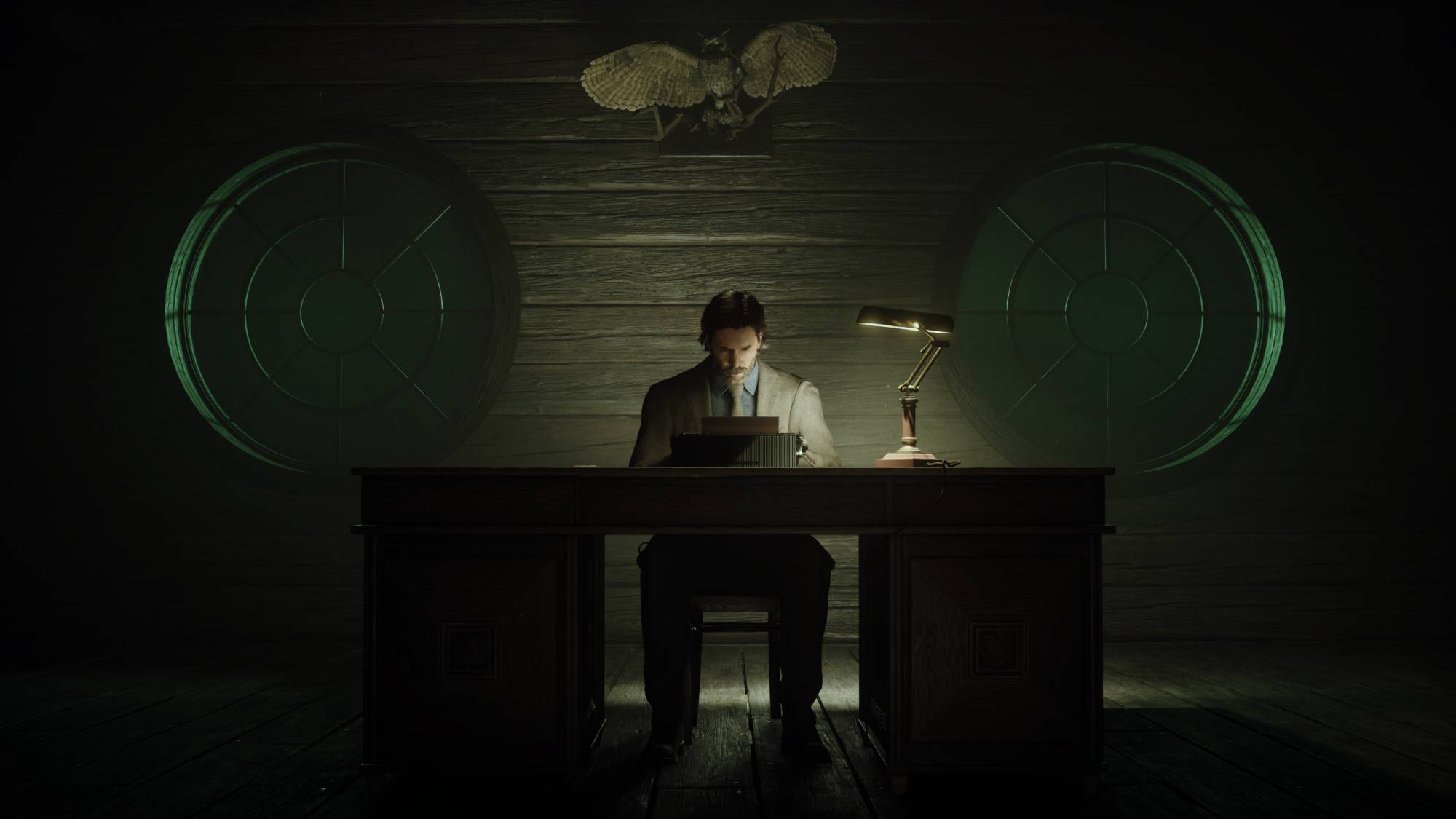
Alan Wake 2 sets a high technical bar, but it’s not quite flawless. The Performance Mode on PS5 suffers from a range of issues including occasional stuttering and screen-tearing. I also encountered a frequent glitch where the case board in the Mind Place would malfunction and refuse to allow me to place new items or switch between active cases. A patch released during the review period made this bug less common, but it hasn’t been entirely resolved.
Verdict
Alan Wake packs plenty of memorable highs, but also several disappointing lows that blemish the experience. The sections where you play as Saga are where it shines brightest, but unfortunately stepping back into the shoes of Alan is bumpier than it is bright.
Even if Alan Wake 2 isn’t quite the triumphant sequel I’ve spent 13 years dreaming about, I’m still thoroughly glad it exists. Not only does it finally provide some closure to the original Alan Wake story — with enough room left for a follow-up — but it’s a game that takes genuine risks, and we desperately need more of those these days.







